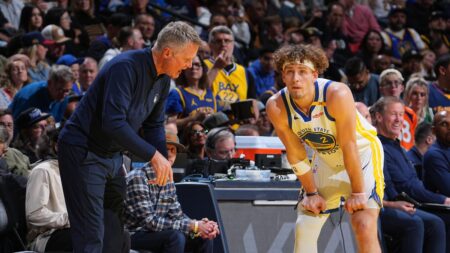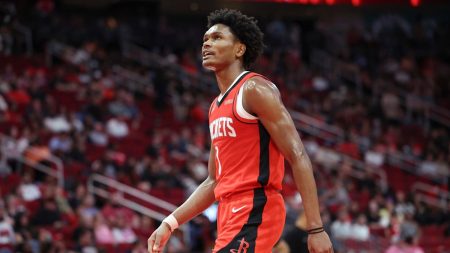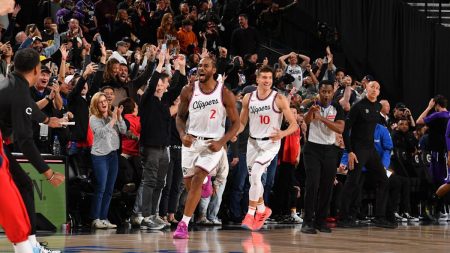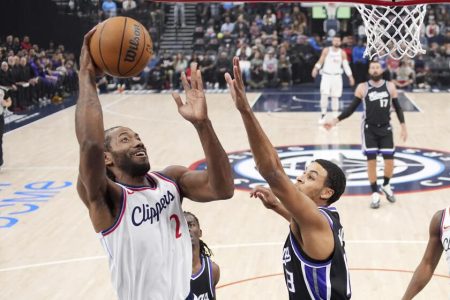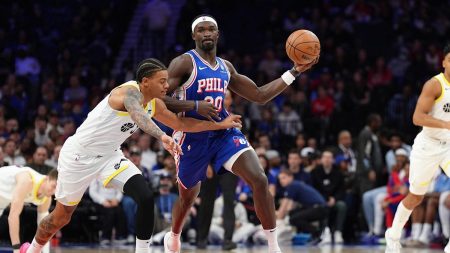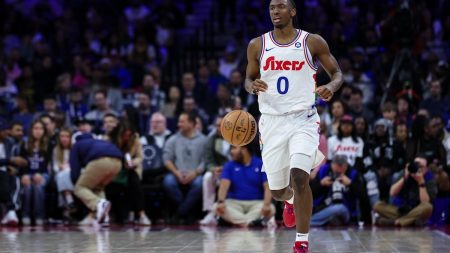Julius Erving’s Iconic Dunk: A Window into Basketball’s Past
You can still see the moment online, 42 years later: Julius Erving, aka Dr. J, of the Philadelphia 76ers pulling off his January 1983 “rock the cradle” dunk against the Los Angeles Lakers. The dunk is a masterpiece, with Dr. J cradling the ball in his arm as he goes airborne and slams it home over the Lakers’ Michael Cooper. Mike Sielski, a sports columnist for the Philadelphia Inquirer and the author of the recently published book Magic in the Air: The Myth, the Mystery, and the Soul of the Slam Dunk, unequivocally states, “It’s the greatest dunk of all time.” Sielski’s book is a comprehensive journey through the history of dunking, bringing to life the long-ago highlights of Dr. J and other legends, such as the epic 1988 NBA Slam Dunk Contest battle between Michael Jordan and Dominique Wilkins.
Dunking’s Early Pioneers and Civil Rights Era Impact
The book delves into the origins of dunking and the perhaps unanswerable question of who was the first to dunk. Sielski introduces us to Jack Inglis, who reportedly hung on to the cage surrounding a court and threw the ball into the net, and Bernard Dobbas, a man of incredible physical strength who allegedly slew a mountain lion with his bare hands. Another early pioneer was Joe Fortenberry, a 1936 US Olympian from the town of Happy, Texas. Beyond these early figures, dunking took on a special significance during the civil rights era. Bill Russell, Wilt Chamberlain, and a UCLA standout named Lew Alcindor (who later became Kareem Abdul-Jabbar) were among the top practitioners of the dunk. After a sensational sophomore season, Alcindor’s dunking skills were so dominant that the NCAA and high school authorities controversially and mysteriously banned the dunk from 1967 to 1976. Sielski believes this ban was rooted in the broader societal context of the time, when Black athletes were making significant strides in sports, mirroring their fight for equality in society.
The Return of the Dunk and the ABA’s Role
What brought the dunk back into favor? Sielski credits the upstart American Basketball Association (ABA) and its popular slam dunk contest. The ABA-NBA merger in 1976 brought dunking experts like Dr. J into the NBA, and a younger generation, including Michael Jordan, carried on the tradition, creating new and unforgettable moments in the dunk contest. The book also highlights the contributions of women’s basketball, featuring trailblazers like Georgeann Wells, Charlotte Smith, and Sylvia Crawley. Despite the reported decline in dunking today, Sielski notes that there are still NBA players who make it an essential part of their game, from unlikely dunk contest champion Mac McClung to the gravity-defying stars of the past.
Sielski’s Journey Through Basketball History
To write Magic in the Air, Sielski embarked on multiple road trips, seeking out the stories and artifacts that brought dunking’s history to life. He traveled to Happy, Texas, a suburb of Amarillo, to meet Oliver Fortenberry, whose late father Joe had played for Team USA at the notorious 1936 Games in Berlin. Sielski held Joe Fortenberry’s gold medal and received a warning to watch out for rattlesnakes. He also visited Raleigh, North Carolina, including a local restaurant named Jimmy V’s Osteria and Bar, which honors the famed NC State coach Jim Valvano. The score on the wall is always 54-52, the final of the 1983 NCAA championship, decided by Lorenzo Charles’s dunk over Houston and its Phi Slama Jama roster. Sielski’s journey also took him to Murray State, where Ja Morant used his dunking skills to become a campus legend before leaving college early for the NBA.
The NCAA’s Controversial Ban on Dunking
One journey Sielski couldn’t make was to the NCAA offices in Indianapolis. He sought access to the organization’s presidential archives, specifically to document the reasoning behind the late NCAA president Walter Byers’s decision to ban the dunk from 1967 to 1976. Sielski points out that 1967 was a year after Texas Western’s historic victory over Kentucky for the national championship, which featured an all-Black starting five defeating an all-white team. The ban came after Alcindor’s dominant sophomore season at UCLA, where he legally dunked the ball. “You can’t separate that decade [1967-76] and those who tried to keep the sport ‘as it should be’ from what was going on in society writ large,” Sielski explains. The ultimate act of dominance on a basketball court is to dunk over someone, and during the 1950s, 1960s, and 1970s, it was an opportunity for Black men to assert their presence and skill. Despite Sielski’s efforts, the NCAA did not grant him access to the documents, leading him to threaten to publish their email exchange verbatim, a move that has yet to elicit a response.
Dunking’s Place in Modern Basketball
Sielski’s previous book was on Kobe Bryant, and after completing it, he and his agent brainstormed ideas for another project. Inspired by Tyler Kepner’s book K: A History of Baseball in Ten Pitches, Sielski aimed to create a book that could be read sequentially or randomly, and that would captivate readers with its exploration of dunking. He notes that there’s an element of mythology to dunking’s history, with larger-than-life figures who were both tall and athletically gifted. However, Sielski laments the shift in modern basketball towards a more analytical approach, represented by the increased emphasis on three-point shooting. “The Celtics take and make the most three-pointers in the league … I think the game is suffering for it,” he says. He sees an antidote in the performances of players like Mac McClung, whose spectacular dunks have gained millions of views online and challenge the stereotype that “white men can’t jump.” Watching McClung dunk the ball evokes a sense of wonder and appreciation for the athleticism of past dunking greats, reminding us of the sport’s roots in physical dominance and creativity.
Preserving the Essence of Dunking
Sielski’s Magic in the Air is more than just a history book; it’s a celebration of the dunk as a cultural and athletic phenomenon. The book captures the essence of what made dunking so compelling and why it remains a beloved aspect of basketball. From the early pioneers to the modern stars, Sielski’s narrative weaves through different eras, highlighting the evolution of the sport and the social significance of dunking. He emphasizes that while the game has become more analytical, the dunk’s raw power and spectacle can still provide the excitement and wonder that drew fans to basketball in the first place. The book serves as a reminder that the dunk is not just a physical feat but a symbol of the sport’s soul and its ability to inspire and captivate audiences.


